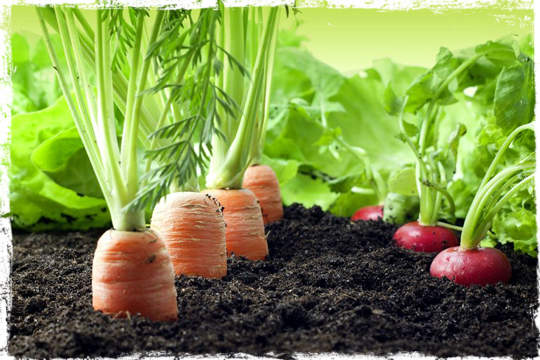
Cantaloupes contaminated with Listeria monocytogenes (a bacterium that causes the infection listeriosis) killed 33 people and sickened many more in 2011. This is just one of many horrific cases of contaminated produce sold to consumers, consumers such as you.
How many more times do you need to hear about recalls of fresh produce contaminated with Salmonella or E. coli before you decide that your local grocery can be a dangerous and deadly place. Not to mention the fact that food prices are rising at an alarming rate.
The drought in California and freezing weather in other parts of the country can and will create produce shortages and increase prices.
The Listeria bacterium is found in animal and sometimes human feces and in contaminated water sources and this is how the bacteria typically ends up in the soil where produce is grown commercially. Chicken litter and cow manure that has not been properly composted along with contaminated water used on the crops is one of the reasons Listeria is present on vegetables in the field.
Manure should be broken down and subjected to temperatures between 130-140ᵒF (54.4-60ᵒC) for at least two days out of a five day “curing” period. Then the manure should set between four and five months before using. Manure as it breaks down will create its own heat and usually rid itself of deadly bacteria that is why it is important that if it smells like manure it is not ready for your garden because it has not broken down sufficiently.
Your backyard compost bin will generate heat as a byproduct of the decomposition process. You will however have to verify the heat was sufficient to destroy the bacterium over this period. The bacterium is essentially pasteurized at the noted temperature ranges.
Produce grown commercially and sold to retail stores is processed and is supposedly cleaned at processing plants to remove surface contaminates. The bacterium is not naturally present inside of the fruits or vegetables.
Handlers of the produce during harvest can easily contaminate the product if certain handling procedures are not properly adhered too. This includes the trailers used to transport the produce to the processing plants. Once there the vegetables and fruit are rinsed by some type of sanitizing solution, but once clear of the solution other equipment such as boxing and bagging machines can transmit the bacteria to the food as well as by human handlers of the food.
Therefore, poor sanitation practices at the processing plants allow the bacteria to contaminate any produce or food product that is processed at the plant. Produce that has been contaminated and recalled in the past include head lettuce, leaf lettuces, processed and bagged lettuce products and green onions. This is just to name a few.
People will purchase the produce, carry it home and often times eat it without thoroughly rinsing the produce. The outer skin of cantaloupe for example may have the bacteria on it. As you cut into the cantaloupe the bacteria is carried to the fruit under the skin by the knife or even by your hands.
You simply do not know what happens to your food. You have no idea what type of fertilizer is used, what type of pesticides are used and as it has been proven time and again the cleaning process after harvest is lacking. Your life is in the hands of others and this must stop. You have to be in control.
It is time you take control of some of your food source to protect your family against deadly bacteria, reduce costs and ensure you always have a fresh supply of food during an extended crisis. It is time you started your own garden.
No excuse about not having the time, or the skills or the space, growing your own food has to become a priority.
Prepping is not just about gathering emergency supplies to ride out a disaster it is also about developing a food source for when the grocery store on the corner is shuttered because of a crisis.
You will need a sustainable and renewable food source during an extended crisis. You need a food source you can trust. Once established using heirloom, plants and seeds your garden will be a food source that costs you very little, other than your own labor and minimal supplies.
Eat As Close to the Ground As You Can
Essentially, if you are not picking or pulling your own food from the ground yourself you have no idea whether it is safe or not. Food grown commercially is handled by untold numbers of people and put through various types of equipment, and this is just the fresh foods. Imagine what happens to canned fruits and vegetables. Are there any nutrients left after all of the handling, steaming and straining that your food has to go through before it reaches your table.
The less handling by others between the ground and your table ensures you are getting the maximum nutritional benefits and by growing it yourself, you are protecting your family from the incompetence of those handling your food.
You know what fertilizer was used and how much. You know the pesticides used, and you know your food is not going to be contaminated by a processing plant 2,000 miles away.